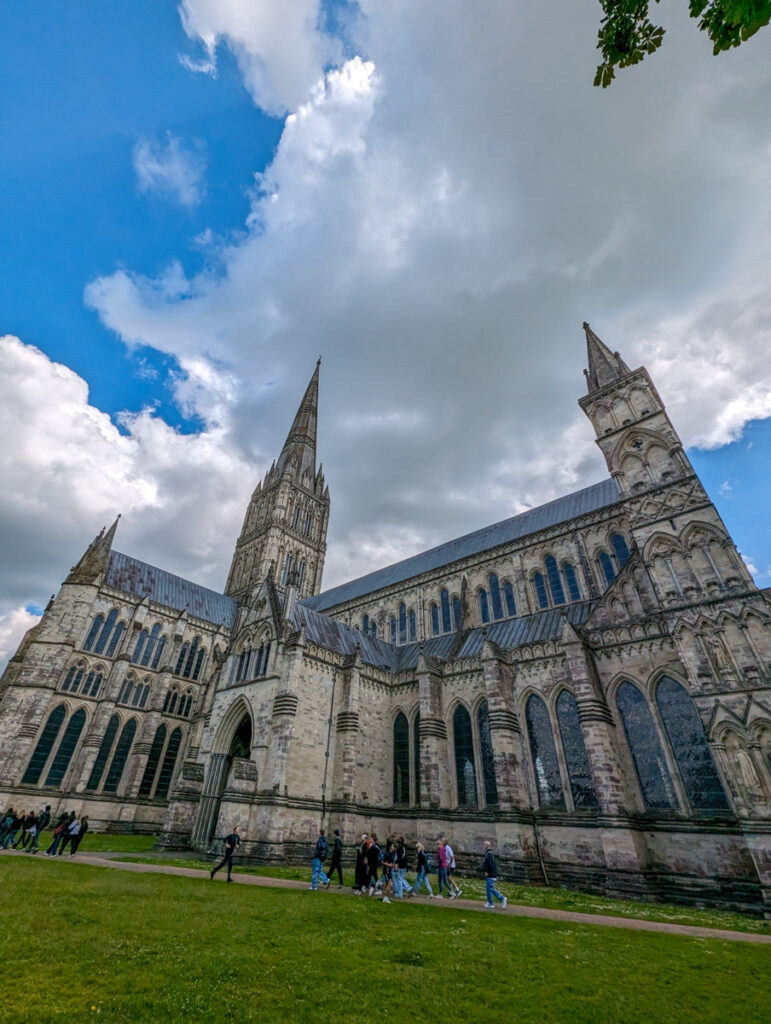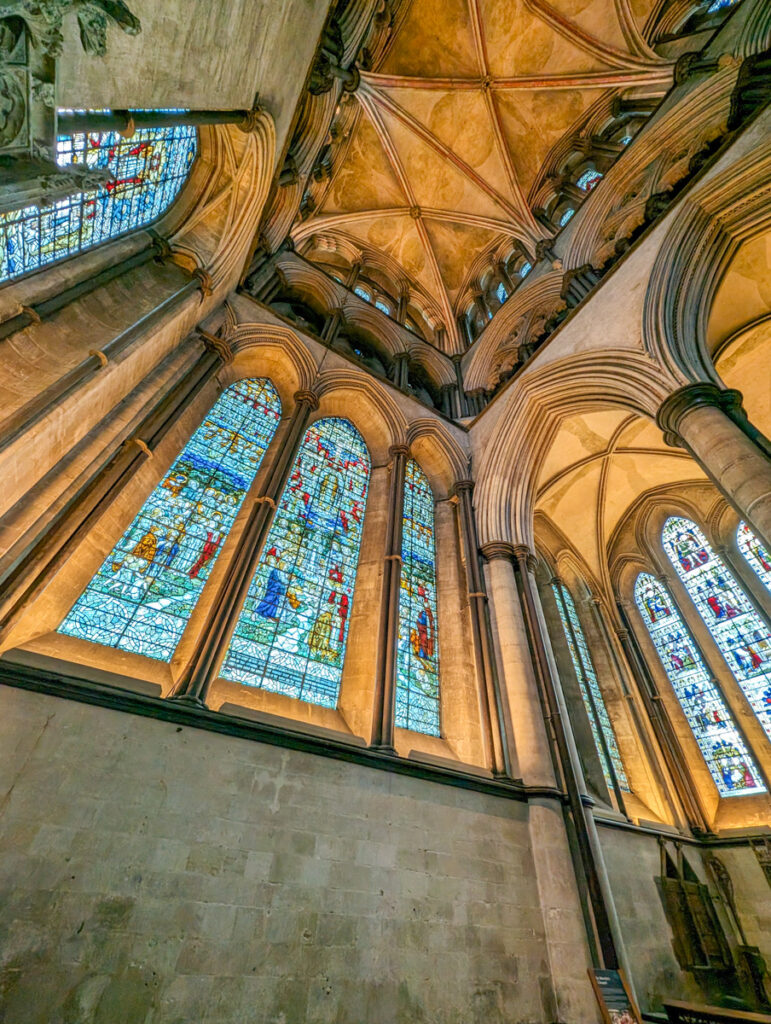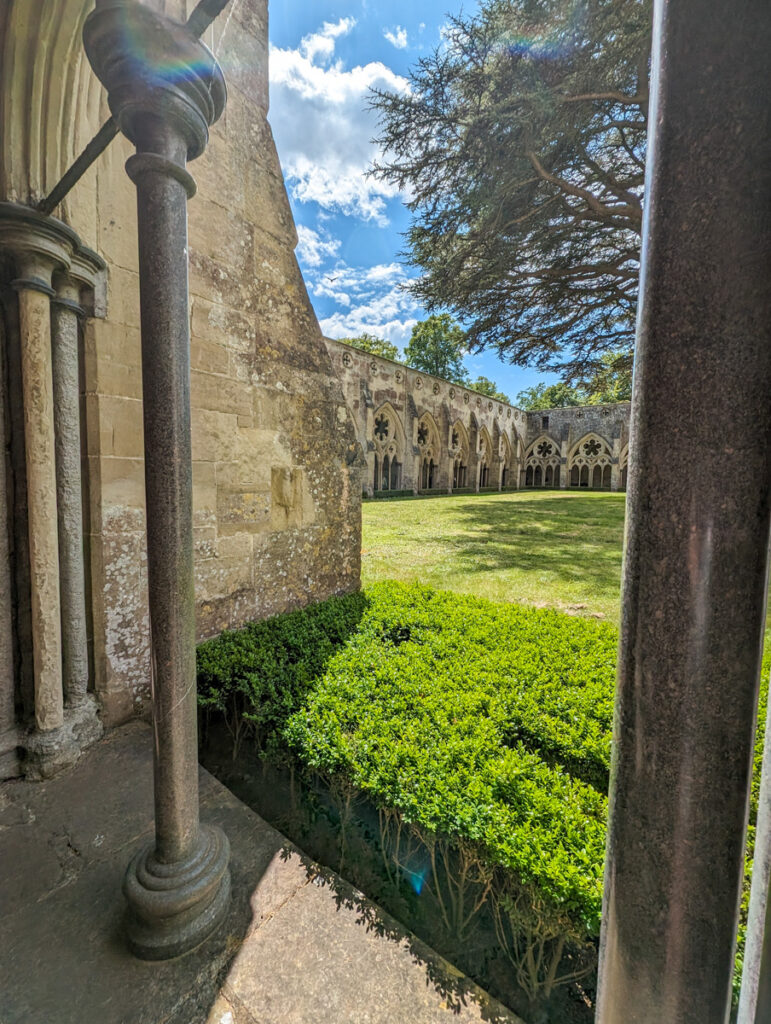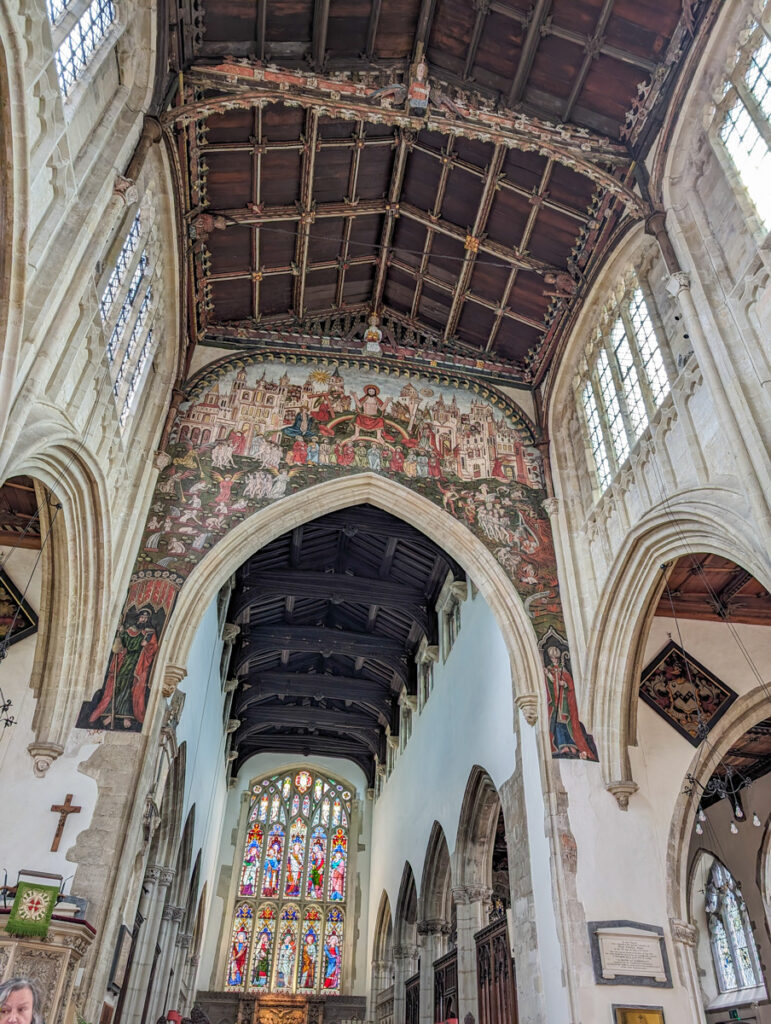7 fascinating facts about Salisbury Cathedral
One of the most momentous Medieval buildings in the West Country – and all of the world – Salisbury Cathedral is a marvel.
As it’s such a glorious building, it’s no surprise that there are a few incredible facts intertwined in its history!
Here are the most fascinating facts about Salisbury Cathedral.
It has the tallest spire in the UK

Salisbury Cathedral is renowned for its soaring spire which is the tallest in the United Kingdom, standing at an impressive 404 feet (123 meters).
Added in the 14th century, this towering structure has become a defining feature of the cathedral and a symbol of medieval architectural achievement.
The spire, constructed from Purbeck stone, is an extraordinary feat of engineering, especially given the limited technology available at the time.
Despite concerns about its weight and the potential for collapse, the spire has stood the test of time, continuing to draw visitors who marvel at its height and the skill required to build it.
And it’s home to the oldest working clock in the world
Within the ancient walls of Salisbury Cathedral is the world’s oldest working clock, a remarkable piece of medieval engineering dating back to 1386.
This clock, unlike modern timepieces, lacks a traditional face; instead, it was designed to strike the hours, marking the times for prayer and other daily activities.
Constructed from iron and driven by weights, the clock is a testament to the craftsmanship of its creators.
Despite its age, it has been meticulously maintained and continues to function to this day.
The Magna Carta is also home here
Salisbury Cathedral holds one of the four surviving original copies of the Magna Carta, a document that has profoundly influenced the course of history.
Signed by King John in 1215, the Magna Carta is often celebrated as a cornerstone of modern democracy, establishing principles of justice and the rule of law that resonate to this day.
The Salisbury copy is considered one of the best-preserved of the originals, housed in the cathedral’s Chapter House where visitors can view it up close.
It was built in a record time

Salisbury Cathedral is unique not only for its architectural grandeur but also for the speed at which it was constructed.
Work began in 1220, and remarkably, the main body of the cathedral was completed by 1258—an incredibly short span of time for such a monumental project, especially in the Middle Ages!
This rapid construction resulted in a stylistically cohesive structure, predominantly in the Early English Gothic style, unlike many other cathedrals that show a mix of styles due to extended building periods.
It’s located on a unique foundation
Unlike many other cathedrals, which are built on solid rock foundations, Salisbury Cathedral rests on a surprisingly shallow foundation of gravel and clay which is only 4 feet deep.
The cathedral’s builders had to carefully manage the distribution of weight to ensure stability, particularly when the spire was added in the 14th century.
Despite these challenges, the cathedral has stood firm for centuries!
It’s home to the longest Cathedral cloisters in England

Salisbury Cathedral is home to the largest cloister in England, which spans 181 feet (55 meters) along each side.
These cloisters were completed in the 13th century and provided a place for quiet reflection and meditation – they were originally used by the cathedral’s monks.
No Font for 150 years
A surprising fact about Salisbury Cathedral is that it lacked a permanent font (a vessel for baptisms) for over 150 years.
This absence left a significant gap in the cathedral’s interior until 2008, when a new font was finally installed.
Designed by contemporary sculptor William Pye, the font is a striking addition to the cathedral.
The font features a unique cruciform shape with gently flowing water that spills over its edges, creating a reflective surface that mirrors the surrounding architecture.





